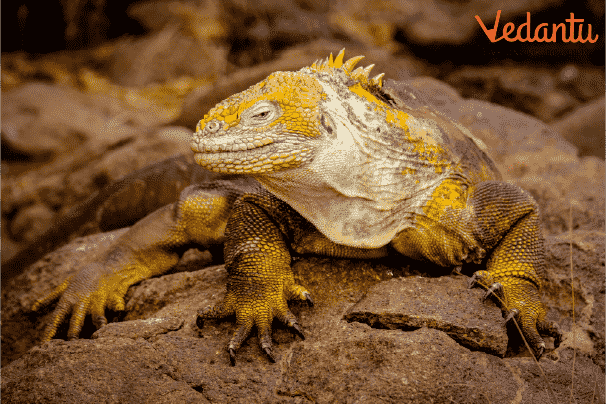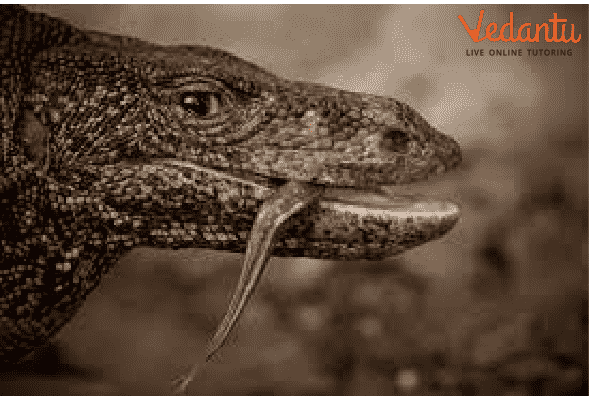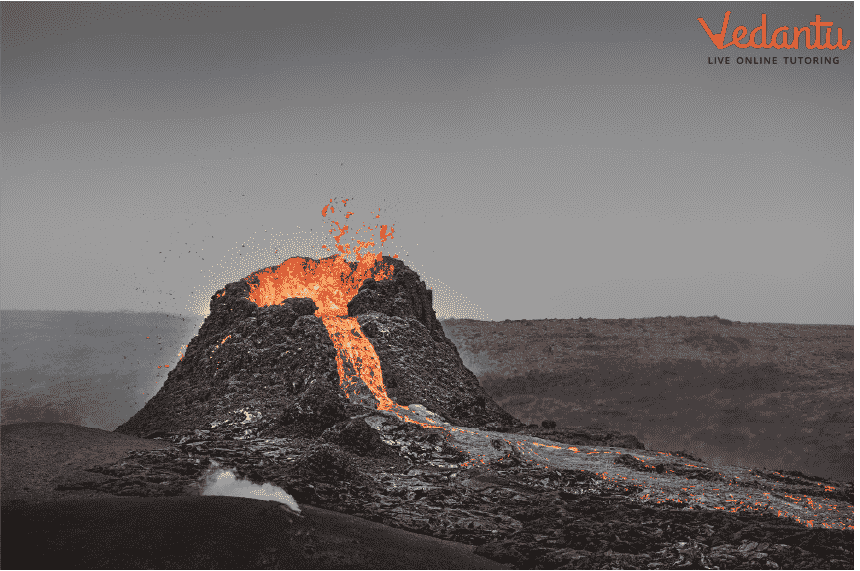




What Are Lava Animals? Characteristics, Examples & Their Role in Nature
Many animals prefer to stay near volcanoes or in them. The Lava Beds are close to Tule Lake Wildlife Refuge and cover three different habitats. In some lava tube caves or caves beneath the rocky ankle of the lava flow, there is enough moisture and protection for the animals, and they can breed in the pools of water that collect during occasional rains. There are the following Lava animals:
Lesser Flamingo- The flamingos construct their nests on tiny islands that grow in the lake during the dry season, free from most predators. Additionally, because there is no competition for food, flamingos have easy access to the algae in volcanic water, which is a key food source.

Lesser Flamingo
Galapagos Land Iguanas- On a volcanic island, these cunning finches have transformed into vampires to survive. For any species, especially those that nest inside the crater, this climate poses a constant threat of eruptions, earthquakes, and lava spilling, yet land iguanas are frequently able to perceive greater volcanic activity, giving them time to escape to safety.

Galapagos Land Iguanas
Thermophiles- In general, thermophiles are microorganisms. They can be found near or within volcanoes and survive extreme heat. The organisms are protected from high temperatures by special enzymes. The thermophile is known to walk quickly through temperatures of 252 degrees.
The Animals in Guam- An undersea volcano is active near Guam. Despite its growth and eruptions, it is home to a unique ecology of animals. Crabs, shrimp, barnacles, limpets, and many species support the creatures supported by the environment. They've adapted to living in a hazardous house filled with harsh chemicals.

The Animals in Guan
How Hot is Lava in Fahrenheit?
Lava flows that naturally utilise openings in vents and cracks to escape are closely related to volcanic explosions. In most incidents, lava ejects with an orange glow at temperatures between 1470°F and 2190°F.
At temperatures of thousands of degrees Fahrenheit, lava, the melted rock that spills from volcanoes, can flow. Volcanoes release lava on the colder side at a temperature of 570 F.
The dark red lava that is frequently observed slowly creeping across areas of Hawaii is in the middle range of lava temperatures, measuring around 895 F. An equivalent-temperature material was released by Mount St. Helens.
Any substance with a melting point lower than 2,190° F can be melted by lava, including rubber, tanks, vehicles, trees, and grass.
What Makes Lava Hot?
The heat of the Earth's interior causes the heat of the lava. It is believed that some areas of the inner core are hotter than 6,000°C. Magma is a molten rock located deep below the Earth, whereas lava is molten rock that has reached the surface, erupted, and been released as a gas. Modern lava only reaches temperatures of roughly 1,250°C.
There are two main reasons why lava is hot: Around 100 km below the surface of the Earth, where rocks melt to form magma, pressure, and radiogenic heating cause it to be extremely hot. The magma doesn't lose much heat on the journey to the surface because the rock surrounding it acts as a strong absorber.
Mostly silicon and oxygen make up lava. Lava frequently interacts with additional elements, including iron, magnesium, potassium, and calcium, as it departs and travels before cooling. Lava is a very hot liquid when it initially penetrates Earth's crust.

Lava Erupting Out of the Volcano
What Does Lava Do to the Skin?
If the lava touches your skin, a human cannot die. Dipping your fingers into molten rock won't instantly kill you; it will cause you to suffer from excruciating burns that destroy nerve endings and boil fat tissue.
But there is a slight chance that the intense heat would likely cause your organs to fail and burn your lungs. The body's water would presumably boil into steam while the lava melted it from the inside out.
Despite not being as dangerous, lava flows should still be taken carefully. This skin starts to be flexible before hardening, even when it's still flexible.
Conclusion
Lava plays a crucial role in the movement of land masses beneath the earth's crust. We get beautiful views as lava flows, and volcanoes rise above the crust. If lava touches you for a fraction of a second, you won't die. Even though you would suffer a severe burn, you wouldn't die unless you fell in and couldn't get out. The amount of lava "covering" and the amount of time it remained in touch with your skin would be crucial factors in how bad your wounds would be with prolonged contact.
FAQs on Lava Animals: Concepts, Types & Importance
1. What triggers lava eruptions?
Because of how hot it is deep below the Earth, some rocks slowly melt and turn into lava, a thick fluid. Since magma is lighter than the surrounding solid rock, it rises and gathers in magma chambers. Some magma eventually flows through splits and vents to the Earth's surface.
2. What properties does lava have?
Moist lava can reach temperatures between 1,300 and 2,200 °F (about 700 to 1,200 °C). Either the substance is tough and barely flows, or it might be incredibly fluid, flowing almost like syrup. The fluidity of the lava increases with silica content.
3. Does lava have water in it?
Even before it erupts (when it is called magma) and flows across the earth, lava does contain a lot of water. However, water boils off instantly at high temperatures, so the water present in the lava is neither liquid nor vapour.





















